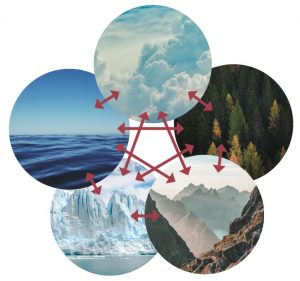Climate Systems
In this set of chapters, students researched and the planetary systems that shape climate and are involved in global climate change. In doing so, they explain the climate system, including its components and composition and use key climate indicators to illustrate how changes are occurring in the system. Next, they identify drivers or causes of change in climate systems, and explain how we know these systems and their indicators are changing. Finally, teams of students then explore the social and environmental systems threatened by or benefit from changes in climate systems.
Chapter 1 explores the atmosphere and focuses on changes in greenhouse gases since the Industrial Revolution. Chapter 2 researches the hydrosphere, with a special examination of the physical changes of Lake Baikal in Siberia and the resulting biological consequences. Two climate systems, the cryosphere and lithosphere, are explained in Chapter 3, with a focus on how the systems interact together. Finally, the biosphere is explained in Chapter 4, with key highlights of how ecosystems and wildlife communities are adapting (or not) to climate change. When learning about these systems, note that all Earth systems interact (see Figure below) so at times it is difficult to separate these systems. Students, in their writing, highlight how these complexities make understanding and predicting future changes more difficult.

